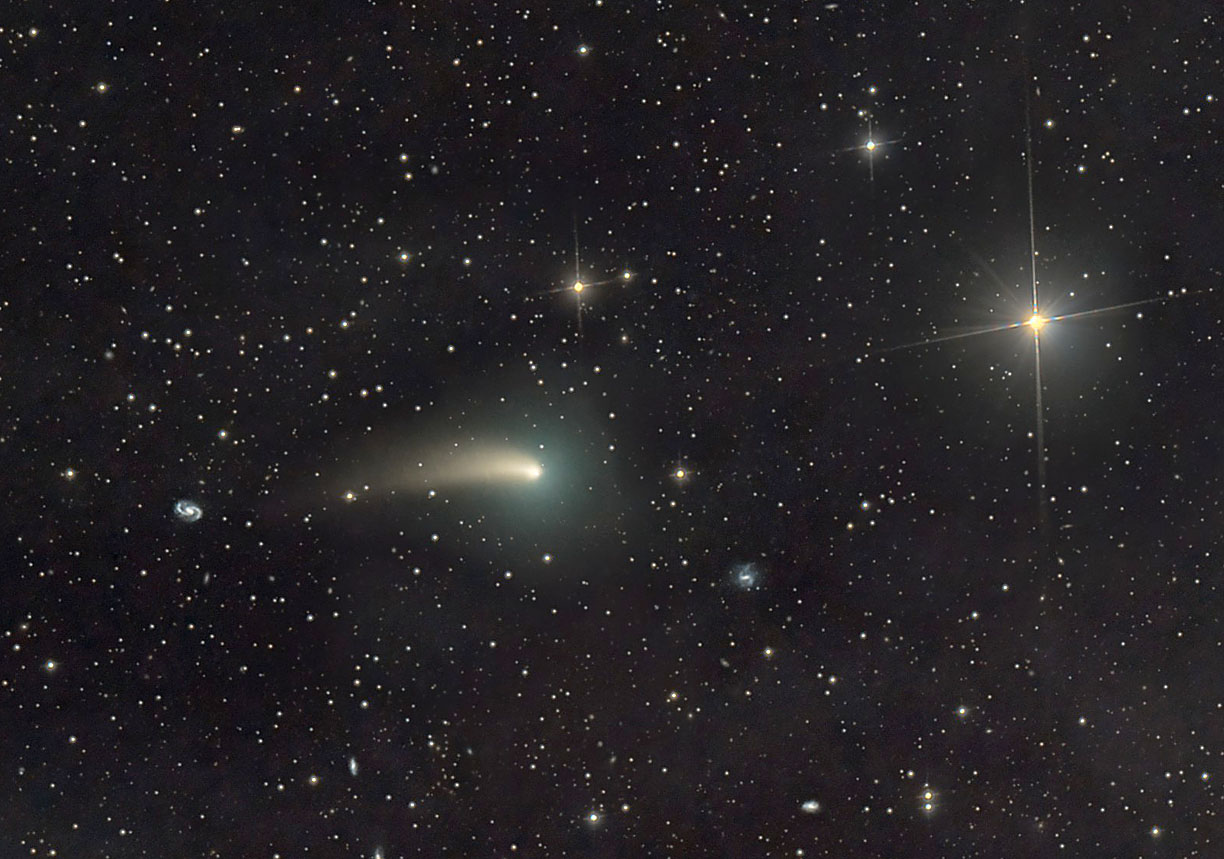January is the month when the Earth passes perihelion (the point of its orbit closest to the Sun). This year, in 8 days, another interesting object of the Solar System will be in perihelion — comet C/2022 E3 (ZTF). Perhaps at this time it will already be visible to the naked eye. Also in January, the opposition of Pallas (2 Pallas) is expected, which is not very favorable for Ukrainian observers, since the declination of the asteroid at this time will be about -30° and at the latitude of Kyiv it will not rise high enough above the horizon. And on January 21, the Moon will approach the Earth at a minimum distance in 2023.

January 1
- The moon accults Uranus (5,7ᵐ)
January 3
- The Moon is 1° south of Mars (-1.1ᵐ)
- Maximum activity of the Quadrantid meteor shower (up to 50 meteors per hour)
January 4
- The Earth at perihelion, 0.983 AU (147.1 million km) from the center of the Sun
January 6
- Full moon
January 7
- Mercury is at inferior conjunction with the Sun
January 8
- The Moon at apogee, 406,458 km from the center of the Earth
- Asteroid Pallas (2 Pallas, 7,6ᵐ) in opposition
January 10
- The Moon is 4° north of Regulus (α Leo, 1,3ᵐ)
January 12
- Comet C/2022 E3 (ZTF) at perihelion, 1,112 AU (166 million km) from the Sun
January 15
- The Moon is 3° north of Spica (α Vir, 1.0ᵐ)
- The Moon is in the final fourth phase
January 18
- The Moon is 2° north of Antares (α Scorpius, 1.0ᵐ)
January 21
- New Moon
- The Moon at perigee, closest to Earth in 2023 (356,570 km)
January 22
- Venus (-3,9ᵐ) is 0.5° south of Saturn (0.8ᵐ)
January 23
- The Moon is 4° south of Venus
January 25
- The Moon is 4° south of Neptune (7,9ᵐ)
- Asteroid Hebe (6 Hebe, 8,6ᵐ) in opposition
January 26
- The Moon is 5° south of Jupiter (-2.2ᵐ)
January 28
- The Moon is in the phase of the first quarter
January 29
- The Moon is 6° east of Uranus (5.7ᵐ)
January 30
- Mercury in the greatest western elongation (24.9°)
January 31
- The Moon is 4° south of Mars (-0.3ᵐ)
Follow us on Twitter to get the most interesting space news in time
https://twitter.com/ust_magazine

